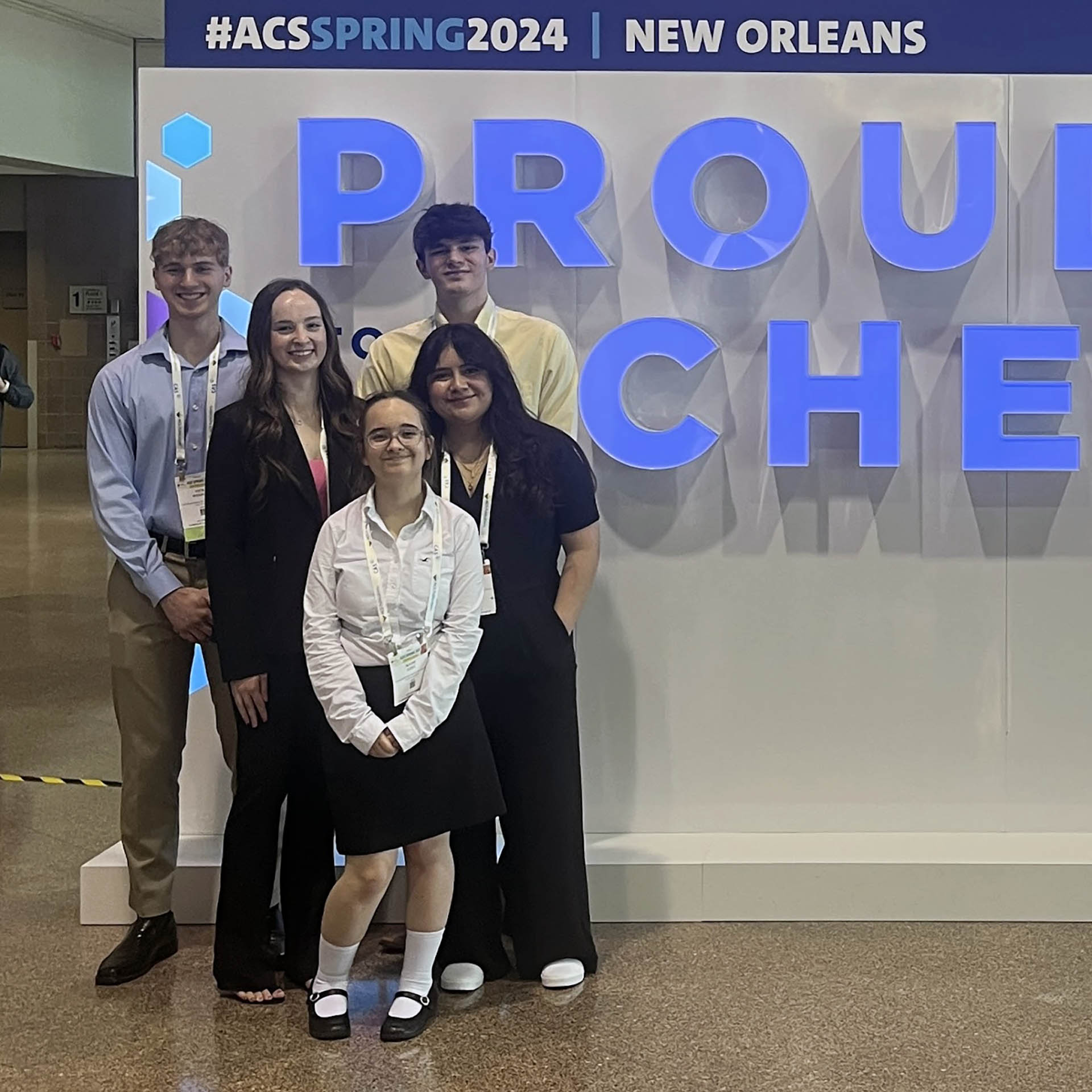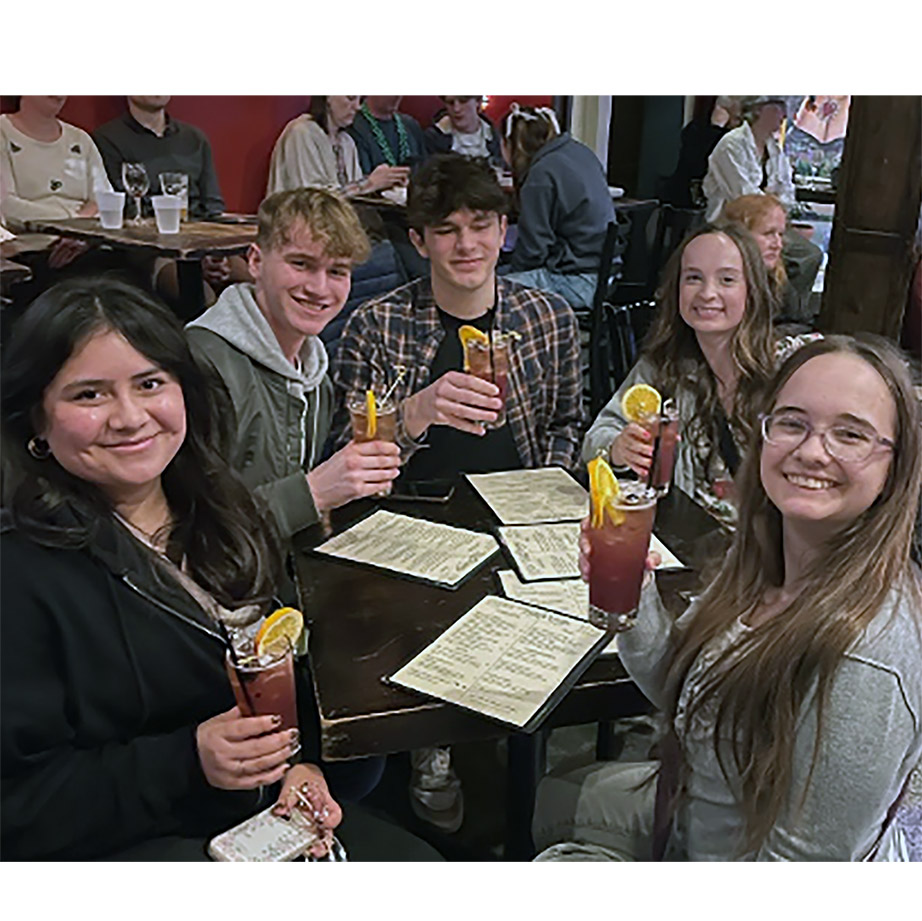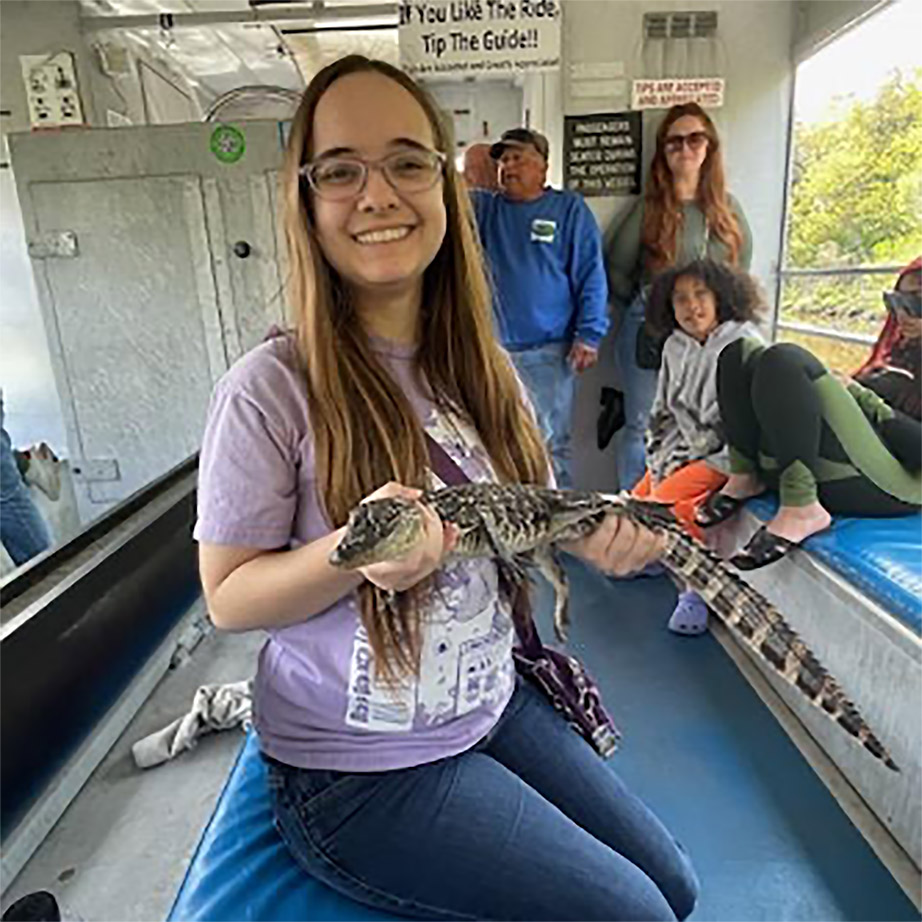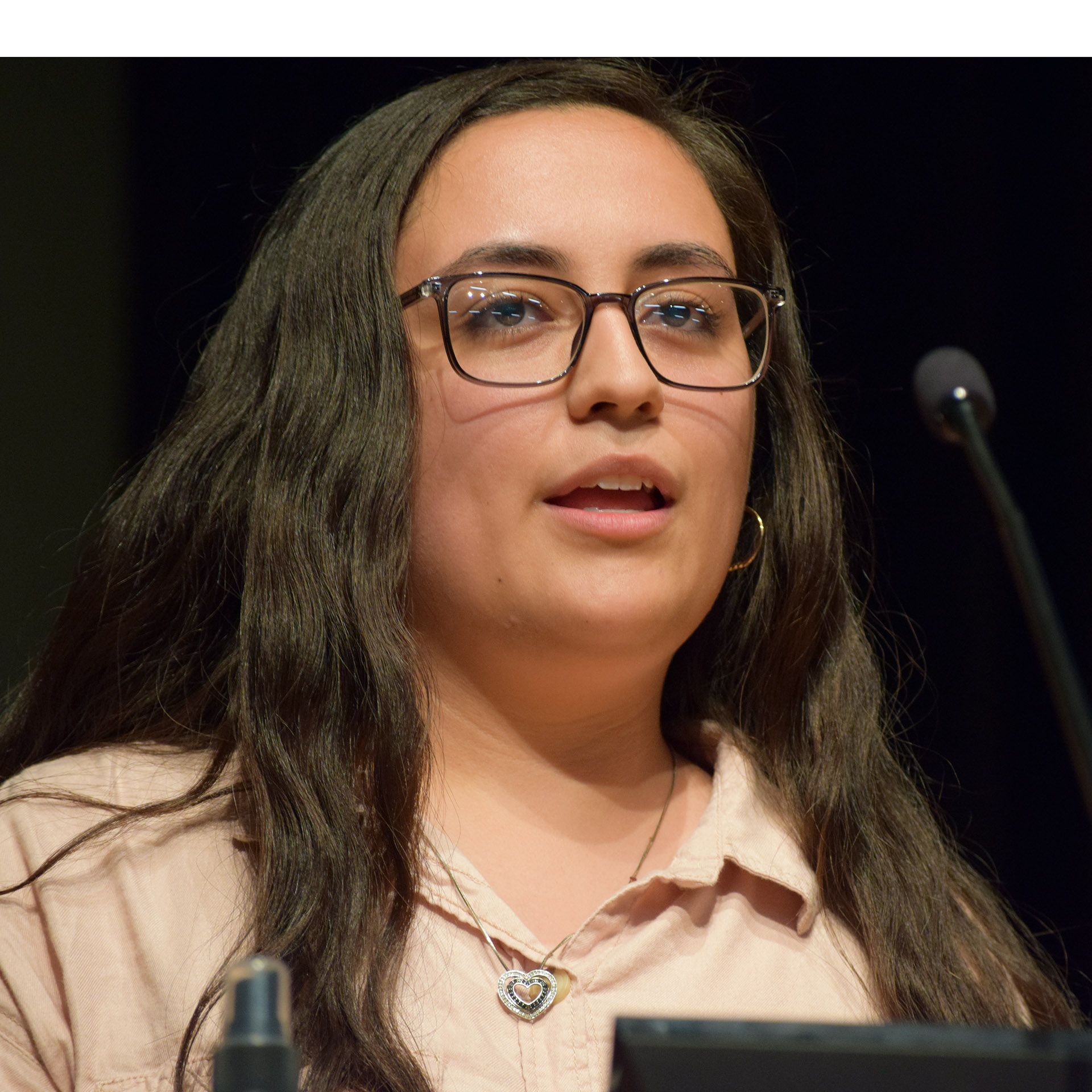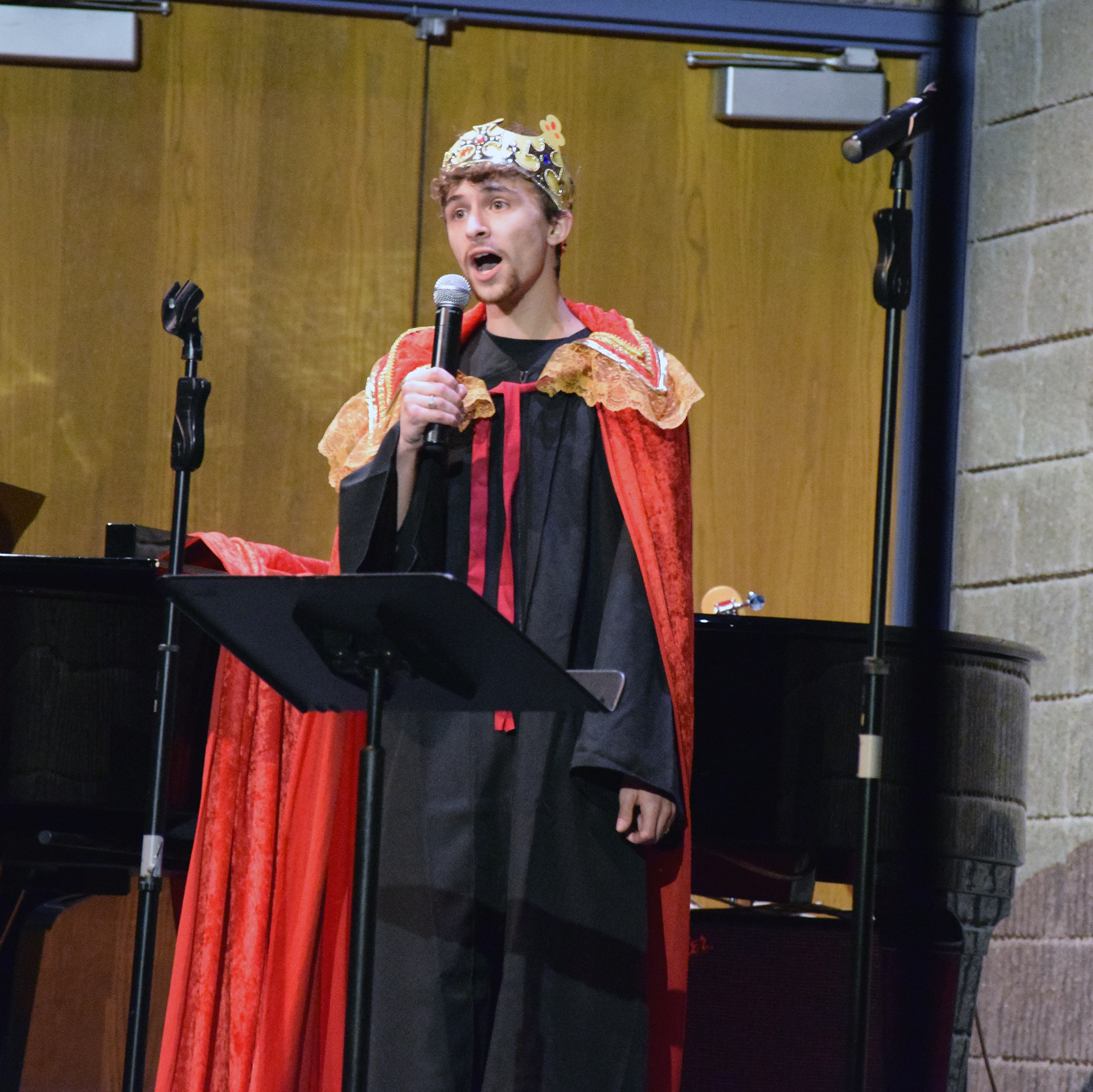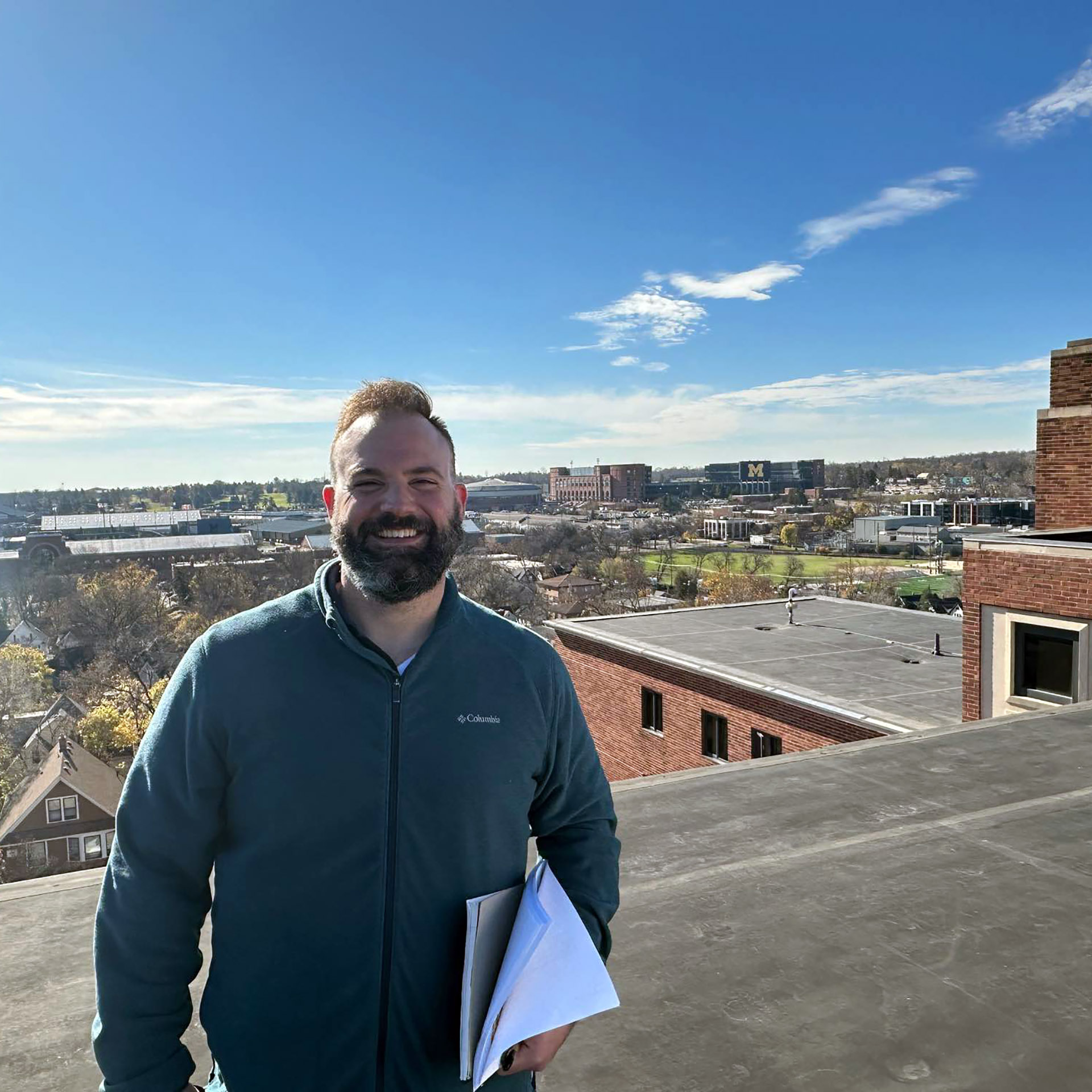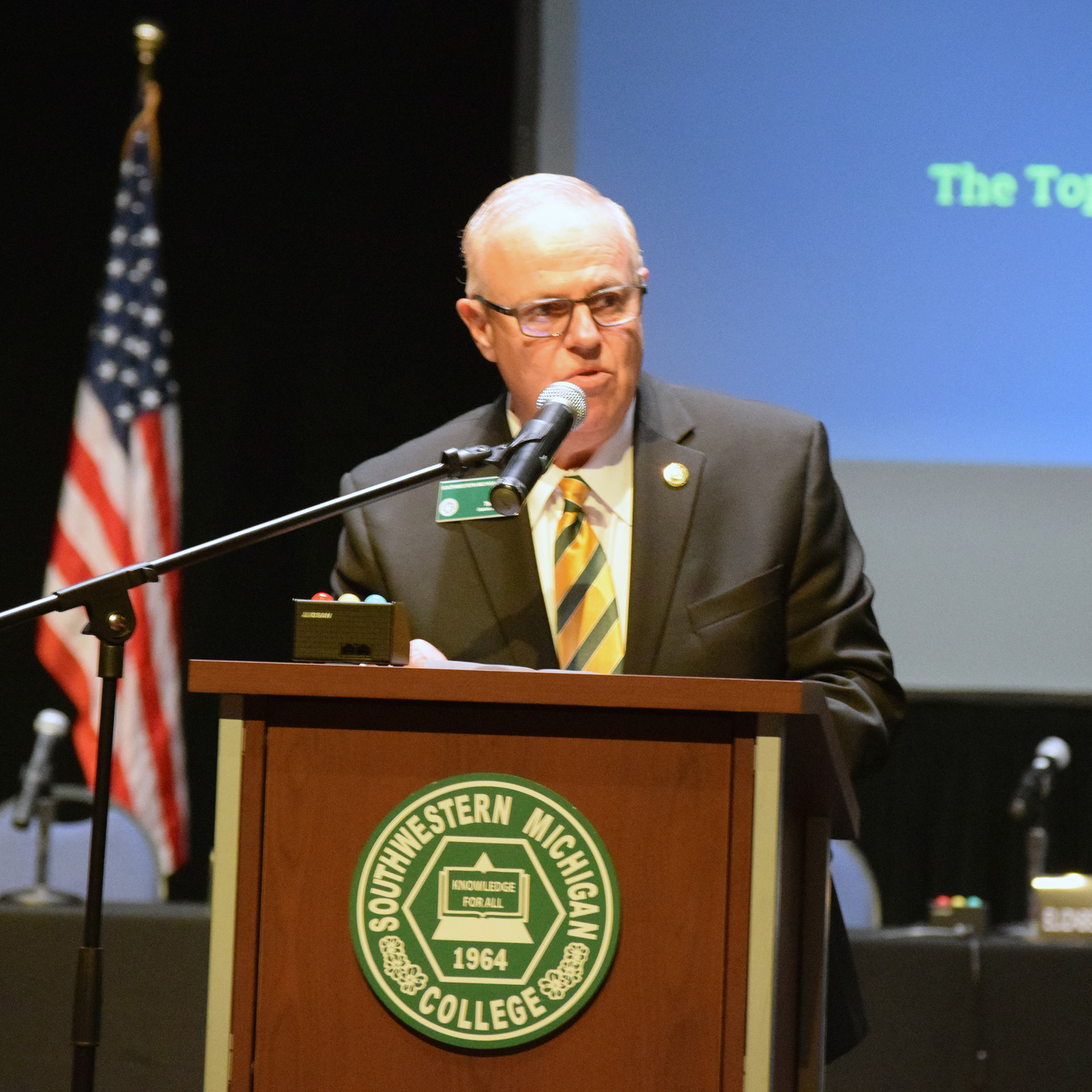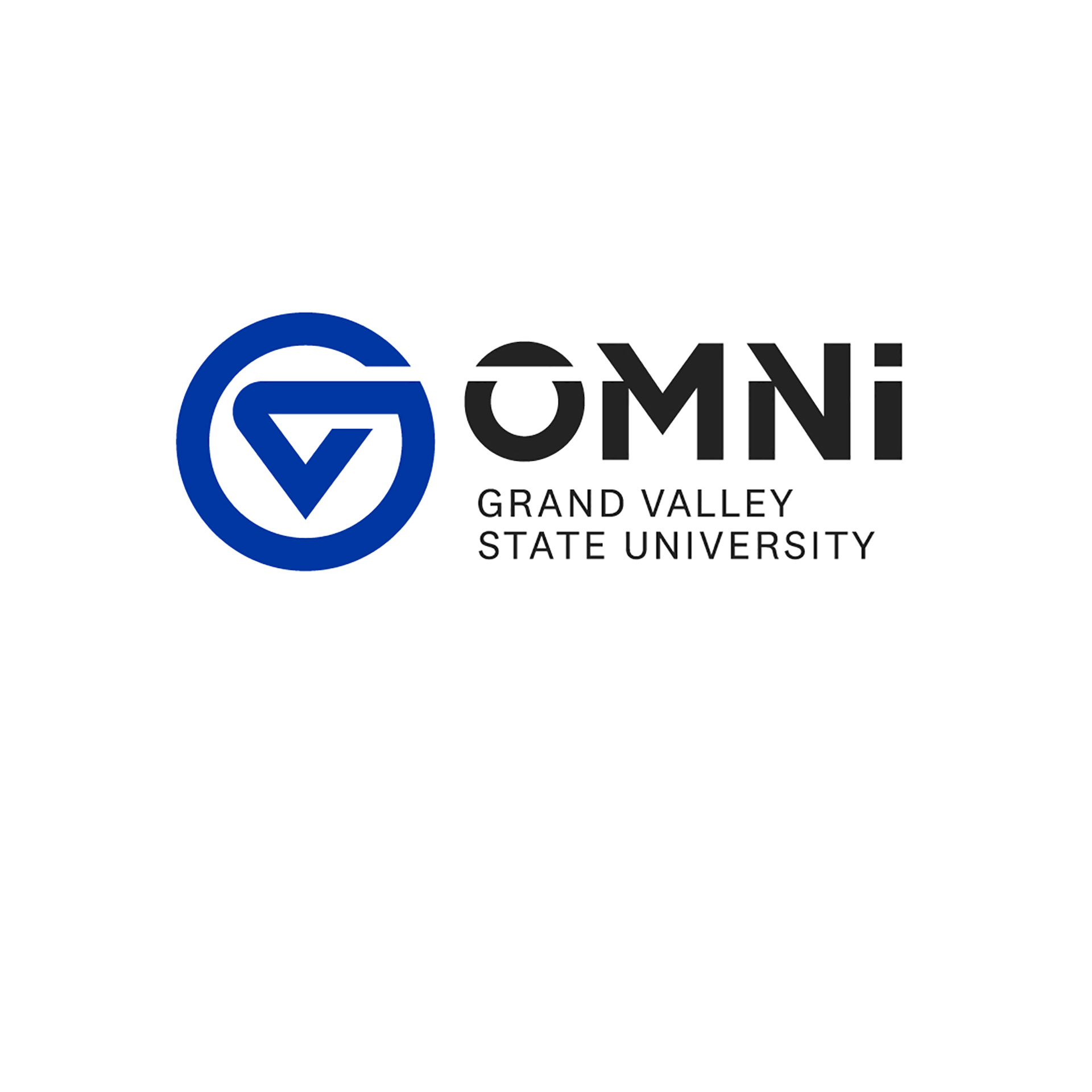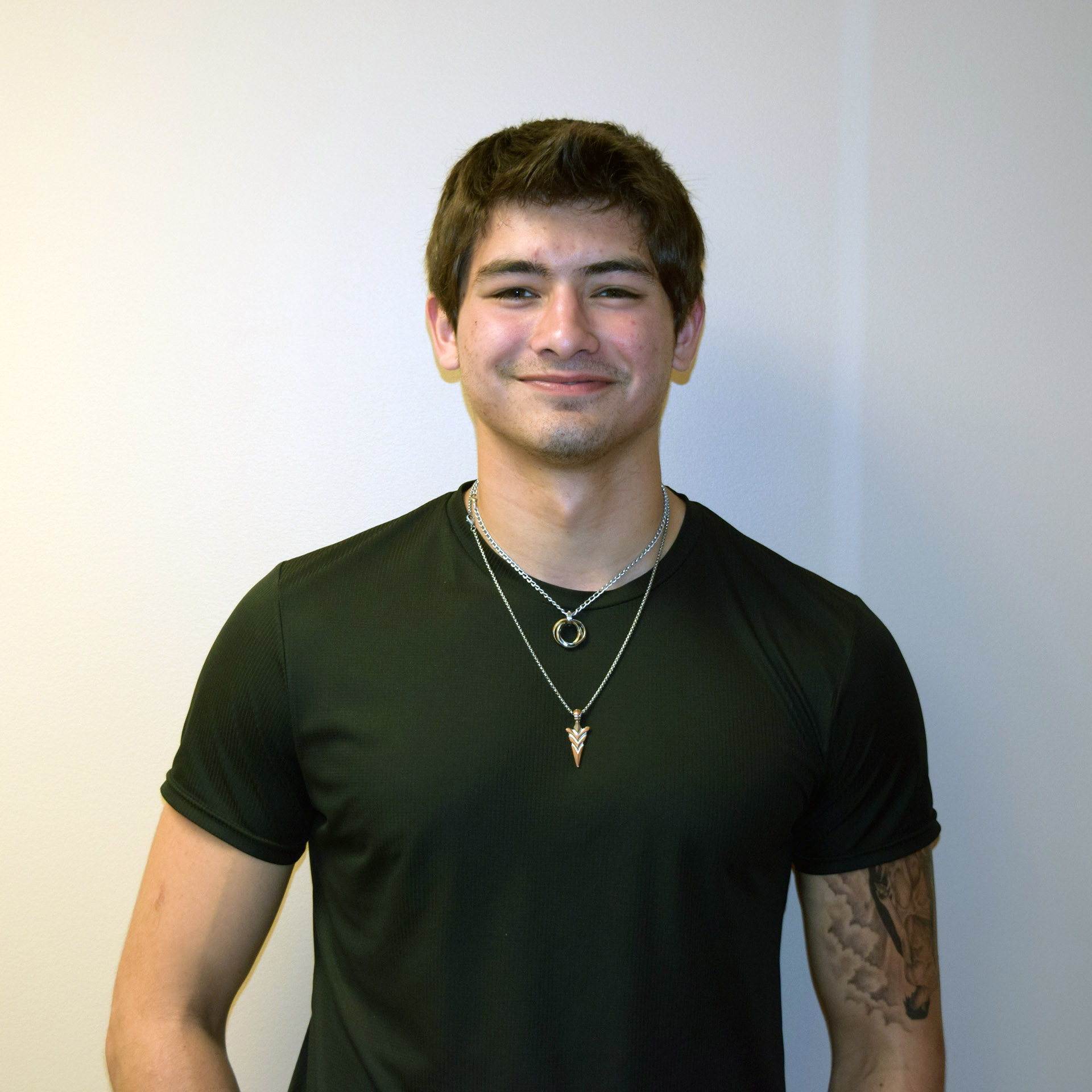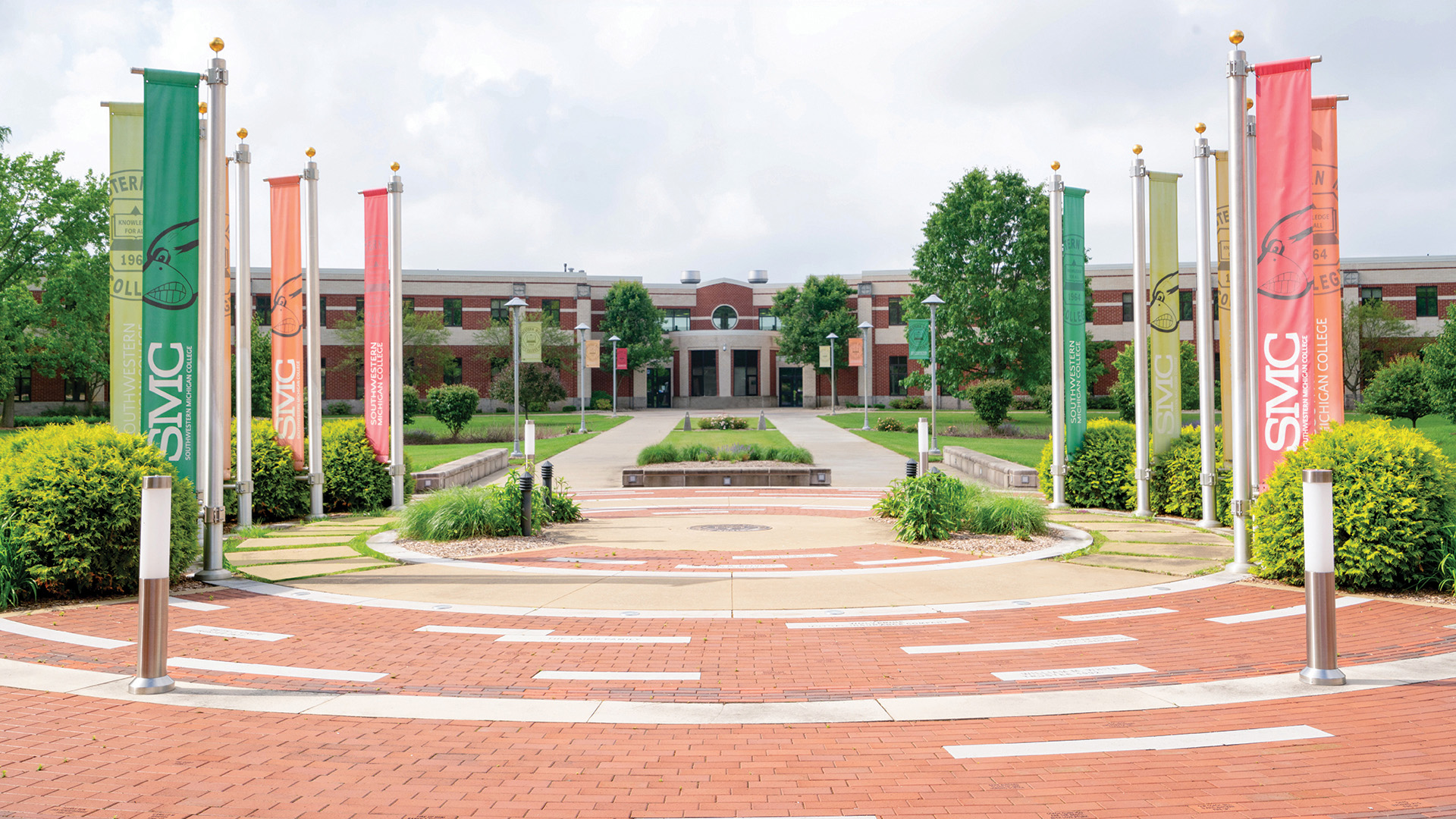
News
-
RECENT NEWS
SMC’s Honors Program's ‘NoTED Talks’ Showcase Student Research
Collage Concert Cements Surround-Sound with Fourth Focal Point
Shawn Rawson Trades Jerdon Hall, SAC for U-M Area Maintenance Coordination
Michigan Supreme Court Hears Oral Arguments at SMC
SMC Partners with GVSU Omni to Offer Bachelor's Degree Options
Locke Roschyk to Study in Germany for a Year
Five SMC Students Present in New Orleans
Published on April 1, 2024 - 11 a.m.
Five Southwestern Michigan College students presented at the Spring 2024 American Chemical Society national meeting in New Orleans March 17-21.
In a rare opportunity for community-college students, Mitzy Grana Diaz, Hartford; Alex Foster, Baroda; Katie Lull, Marcellus; Delaney Platt, Illinois; and Nick Weston, Paw Paw, presented findings of year-long research projects to academics, industry and government professionals.
Louisiana conjures images of music, food and alligators. Students were excited to try new foods — “exotic” dishes such as crawdad queso, raw oysters and alligator bites.
“I have so many awesome memories from the trip,” Foster, who attended Lakeshore High School, said, “but if I had to pick one that especially stands out, it would be the night the other students and I visited Frenchman Street.
“We heard from a local during an Uber ride that Frenchman Street ‘was the spot to be’ for live music, especially jazz. We went to a club and saw a small jazz band. We let the bartender flex her creative muscles and make us random non-alcoholic cocktails to drink while watching the performance.
“When we first got there, the city felt completely unexplored. During our time there, I only got a small slice and still fell in love. There is so much left to explore. The only thing I can think about now is when I can make a trip back to that beautiful city.”
“The trip made me realize how big the world is,” Foster said. “During my poster presentation, I talked to people from all over the world and networked with students from all over the country. They were all so friendly and seemed genuinely excited to be involved in something like the ACS meeting and to learn about my project. It was such an awesome atmosphere.”
“It was my first time visiting New Orleans and traveling by air,” Grana said. “Being one of the youngest presenters made me feel accomplished. I was inspired being surrounded by very intelligent people who are passionate about their work.”
Upon completion of poster presentations, students took advantage for two days of an array of symposiums on the latest chemical research.
All five evaluated natural materials as potential filters for removing lead from water.
Grana and Lull focused primarily on the efficacy of chamomile. Weston and Platt explored the ability of local fungi to remove lead from water.
The latter represents the first time two faculty members collaborated on an SMC research project.
Professor of Biology Tom Beaven worked with Weston and Platt to cultivate fungal strains and prepare them for testing.
“This collaboration uncovered interesting results that will be studied by future generations of students — and, hopefully, presented at national meetings as well,” Professor of Chemistry Dr. Douglas Schauer said.
Foster looked at algae harvested from the Mill Pond, determining it to be a viable filter material.
While Foster is a dedicated researcher in SMC labs, his heart belongs to the world of alternative fuel and battery-powered automobiles — such a specialized field there are few opportunities to discuss this in class at the undergraduate level.
At the ACS meeting, however, Foster was able to enjoy many such talks. Students attended the vendor expo to experience the newest (and most expensive) laboratory technology, returning to the hotel armed with pamphlets and brochures for Schauer to “consider” for future budgets.
The last day, SMC joined a greater New Orleans bus tour designed to introduce Crescent City culture, from architecture and history to burial customs.
Of particular relevance to SMC research was a portion of the tour focused on Hurricane Katrina’s effects. Throughout the tour they learned how far underwater they would have been when the August 2005 hurricane caused levees to fail. They were also shown where levees broke and work done to prevent future disasters.
“Perhaps the most powerful part of the tour was our visit to the lower Ninth Ward, the hardest-hit part of the city,” Schauer said. “Students were able to witness firsthand the effort put into the recovery of this region juxtaposed with the sad reality of how much work is left to be done. I truly believe this is the part of the trip that will stay with the students long after they graduate. Many were not alive for Katrina, so it enjoys a more or less mythical status to them. To be able to attach faces and places to such immense tragedy provides a perspective that simply cannot be taught in a classroom.”
After the bus tour came a boat excursion in the bayou swamps.
“We were pleasantly surprised this was far more academic than expected,” Schauer said. “Our tour guide, Capt. Ernie, held a master’s degree in biology and was simply a font of knowledge. We learned about the impact environmental issues have on the bayou including erosion, oil drilling and global warming. Specifically, we witnessed how unusual weather patterns this winter are affecting the behaviors of the alligators. As an added bonus, the students and I were able to hold a smaller alligator.”
